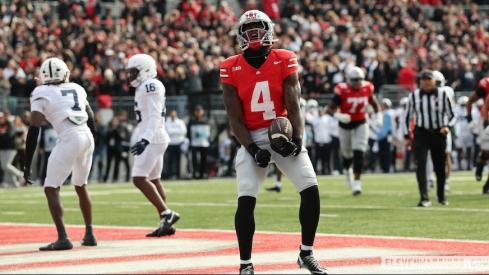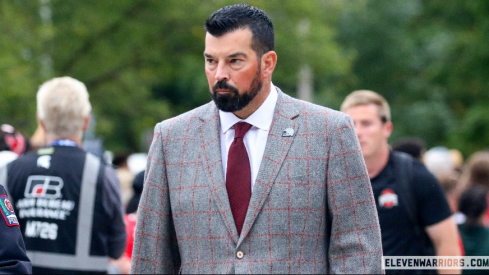“You are cleared for full participation.”
That is the sentence every injured athlete patiently waits to hear. It’s the statement that allows athletes to return to play without restrictions. It’s the green light.
Sports fans spend significant amounts of time and energy waiting for their favorite athletes to receive medical clearance.
Athletes and fans aren’t the only ones waiting for that golden sentence. Physicians love saying it. Sometimes that’s overlooked. Doctors can be portrayed as the “bad guys” keeping athletes off the field, but the responsibility of physicians is to look out for the athlete’s well-being, in the short-term and long-term.
Seeing athletes recover fully from an injury and then return to the same level of play (or better) is the ultimate reward for physicians. That’s our job satisfaction. However, medical clearance is a very comprehensive, deliberate decision.
It’s crucial to consider the athlete’s health after football. Unfortunately, there is an overwhelming amount of anecdotes about athletes whose injuries were masked with steroid injections through play, and they ended up with crippling osteoarthritis or worse.
The job of team physicians is to consider the well-being of athlete patients now and later — as the star quarterback, as the middle-aged father, and as the 70-year-old who wants to play golf on Sundays.
It would be easy for physicians to have tunnel vision. This year. This season. This Saturday. But healthcare providers are charged with protecting the holistic welfare of their patients.
The process surrounding a medical clearance decision is just that: a process. It is multi-faceted, and it encompasses a variety of critical considerations. It also involves a team of contributors.
While the team physician has the final say in this decision, the entire athletic care network (athletic trainers, physical therapists, consulting physicians) is involved in an ongoing, dynamic assessment of the athlete’s progress through rehabilitation. The coaches are also key members of this team. They provide invaluable feedback about the athlete’s technique and performance advancement.
Three main factors go into the return-to-play decision framework:
- Health status of the athlete: How much healing has occurred? This is assessed through talking with the patient, taking follow-up physical exams, and reviewing imaging studies (ex: x-rays, MRIs) and other pertinent labs.
- Participation risk: What risks will be encountered when the athlete returns to full participation? What will the athlete be expected to do on the field (ex: cutting and directional changes, lots of throwing)? What protective measures will be employed (ex: ankle bracing, wrist splinting)? This step should heavily integrate the coaching staff as part of the care team.
- Decision modifiers: These are external factors that are important to consider in the decision-making process, but carefully so and supplementally. Is the athlete in the off-season, or is it almost playoff time? Is there a scholarship on the line? What outside pressures are playing a role? The physician needs to be aware of the influence of these factors and potential conflicts of interest.
In summary, the return-to-play decision is a methodical process. Again, it would be easy to fall into a pattern of satisfying the athlete, coaches, and fans now, but that’s not always the most responsible decision. In fact, physicians often sacrifice popularity for investing in the patient’s well-being.
In the eyes of physicians, athletes are patients first. The dream would be to tell every injured athlete he is “cleared for full participation” with complete confidence in the outcome of his treatment. That is ideal. It’s not always realistic, but it’s what the field of sports medicine strives for, and it’s what keeps the athletic care network motivated every single day of work.
Here's an article I wrote a couple years ago with Dr. David Sohn and AAOS Now (an orthopaedic publication) for more information about the legal aspect of medical clearance.
References:
- Shrier, Ian. "Strategic Assessment of Risk and Risk Tolerance (StARRT) framework for return-to-play decision-making." British journal of sports medicine (2015): bjsports-2014.
- Shrier, I., et al. "Validating the three‐step return‐to‐play decision model." Scandinavian journal of medicine & science in sports 25.2 (2015): e231-e239.
- Shultz, Rebecca, et al. "Team clinician variability in return-to-play decisions." Clinical Journal of Sport Medicine 23.6 (2013): 456-461.


